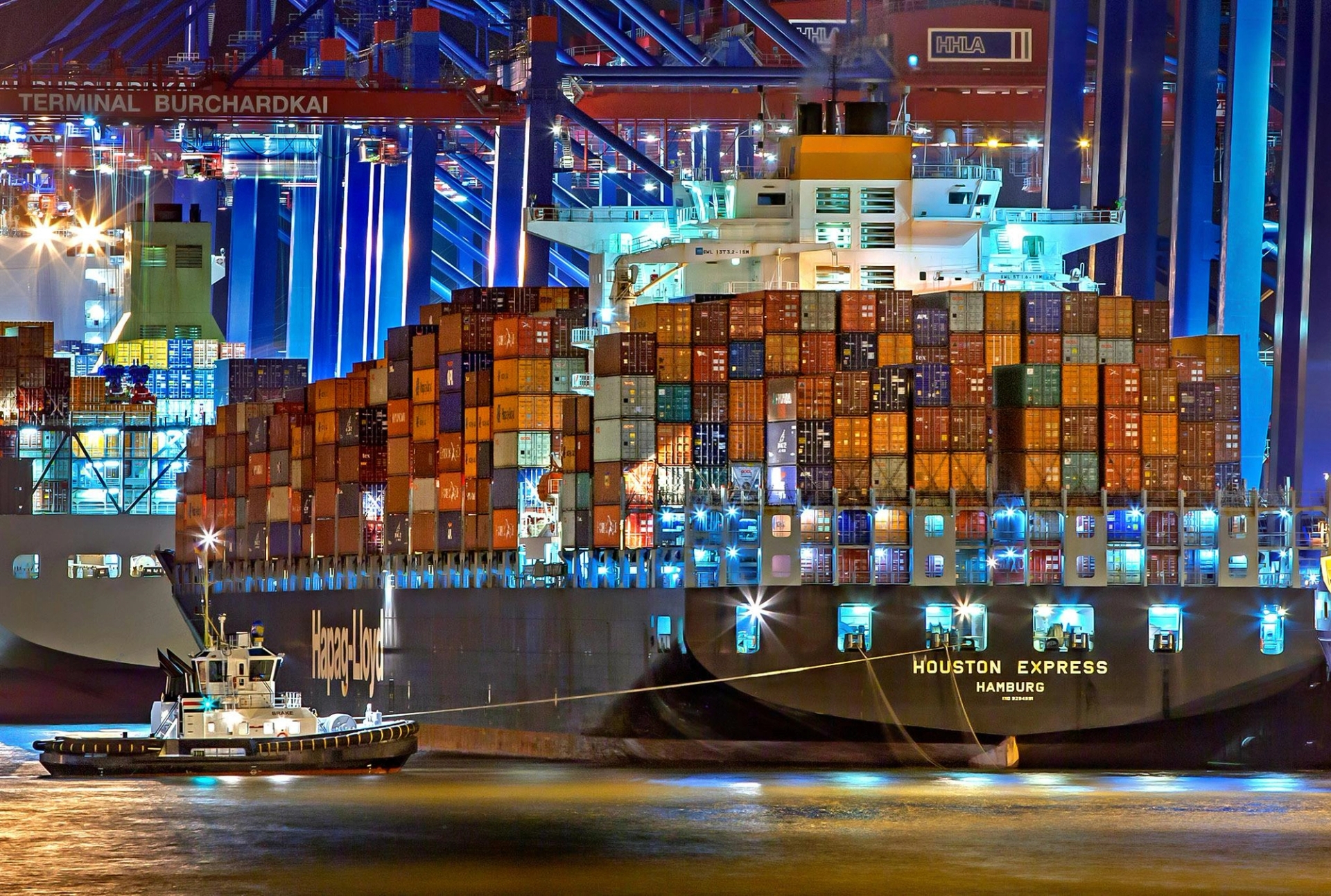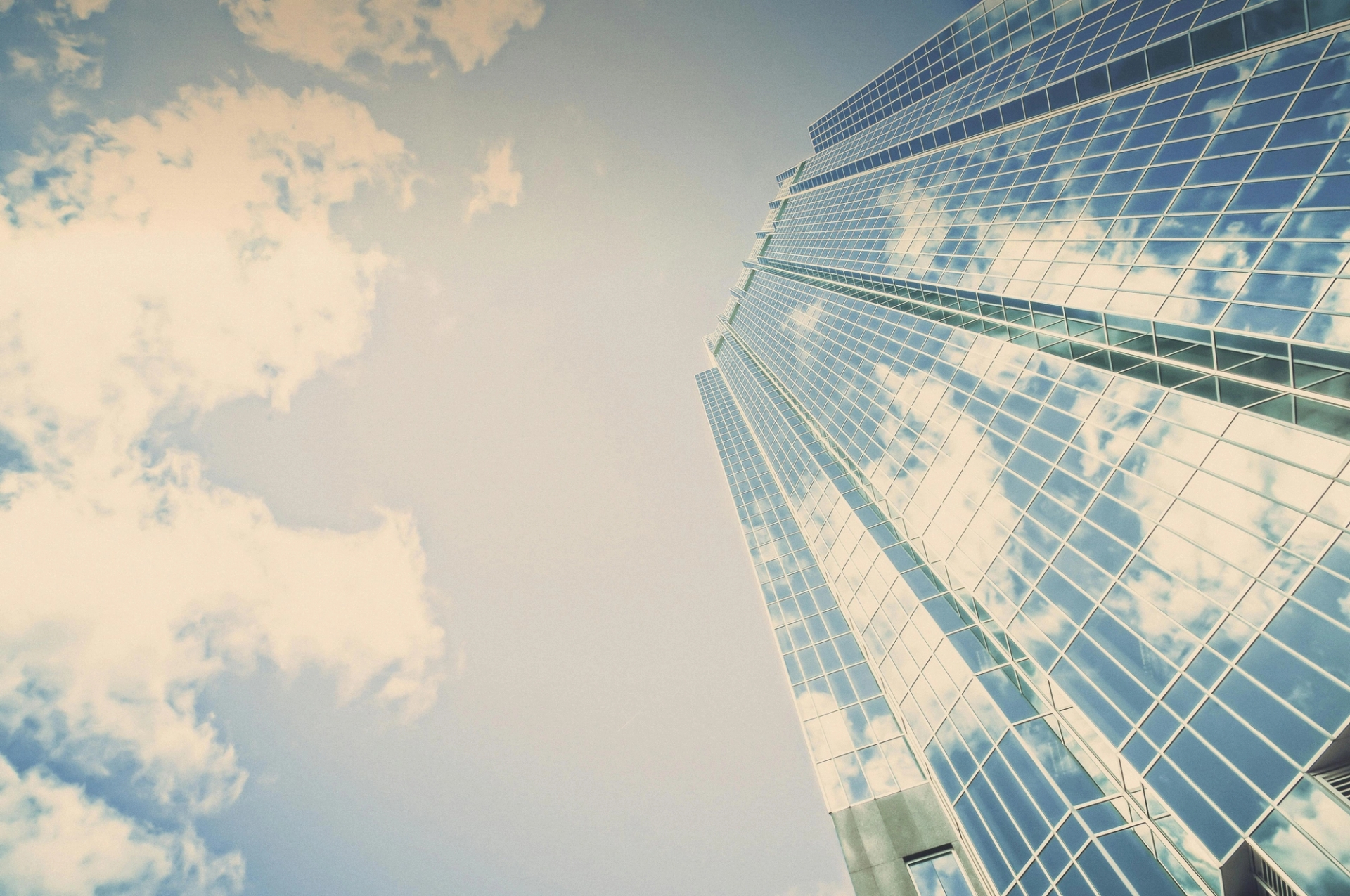
AeroGenie — Your Intelligent Copilot.
Understanding the Link Between Aviation and Tariffs: Impact and Workaround
June 10, 2025
Tariffs are hitting U.S. aviation hard—the industry is fighting back. Here’s how airlines are finding loopholes, adapting, and cutting costs—and why AI and ERP could be key to staying resilient.
In 2025, aviation finds itself caught in a geopolitical tailspin. Once protected under decades-old trade agreements, the U.S. aerospace sector is now reeling from a wave of sweeping tariffs introduced by the Trump administration.
While tariffs have long been a political bargaining chip, their sudden reemergence in aviation has sent shockwaves through the industry. New policy shifts are disrupting a precarious balance that has long allowed aircraft manufacturers and MRO suppliers to operate across international borders. Companies are grappling with increased uncertainty.
Despite being one of the few U.S. industries with a consistent trade surplus—averaging $125–$135 billion annually—the sector is now facing levies on everything from fully assembled jets to the thousands of foreign-made components embedded within them (Reuters).
With airlines already grappling with softening consumer demand, fluctuating fuel costs, and post-pandemic fleet upgrades, the added burden of tariffs is reshaping procurement decisions, rewriting cost projections, and sparking fierce lobbying efforts in Washington. In this article, we’ll explore why tariffs hit aviation especially hard, how industry leaders are responding, and what it all means for the future of flight.
Why tariffs hit aviation so hard
Tariffs aren’t new to aviation companies, but the industry has long enjoyed something close to immunity. That’s largely due to the 1979 Civil Aircraft Agreement, a World Trade Organization-backed pact that eliminated import duties on civil aircraft and many of their parts. This duty-free status enabled U.S. aerospace to become a global export powerhouse, contributing to a $75 billion trade surplus and supporting more than 2 million American jobs (Reuters).
Another reason why aviation feels tariffs more acutely than other sectors is the fact that no single aircraft is truly made in one country. A Boeing 787, for example, may be assembled in Washington or South Carolina, but its parts arrive from Italy, Japan, Germany, and beyond. Airbus aircraft—many of which are now assembled in Mobile, Alabama—also rely on parts from dozens of international suppliers. As a result, tariffs on components hit domestically assembled planes just as hard as those imported whole (Airbus: Producing a Modern Aircraft, NYT).
That’s especially problematic when tariff rates jump overnight. In April 2025, the Trump administration raised the average U.S. tariff rate from around 2% to over 20%, the highest it’s been in more than a century (McKinsey). For some Chinese imports, tariffs soared to 125%, and while aviation wasn’t the stated target, many jet parts were swept up in the broader policy (Deloitte).
Even aircraft delivered from countries with U.S. trade agreements aren’t always spared. Take Airbus: Although it builds many of its A220s in Alabama, some final assemblies still take place in Canada, exposing the jets to potential 25% tariffs unless they meet strict U.S.-Mexico-Canada Agreement (USMCA) compliance (Skies Mag, Deloitte).
This complex web of international suppliers and final assembly lines makes aviation uniquely vulnerable. Add in the fact that aircraft are often ordered years in advance—sometimes with fixed pricing—and there’s little room for airlines or manufacturers to absorb unexpected cost hikes.
In short, tariffs don’t just tax foreign competitors: They unravel the interconnected foundation that makes modern aviation possible.
What’s changing: A new era of tariff uncertainty
The tariff regime in 2025 isn't just aggressive; it’s erratic. On April 2, the Trump administration announced sweeping reciprocal tariffs on most U.S. trading partners, raising the average tariff rate to 22.5%—the highest since 1909 (Deloitte). Just one week later, the administration walked some of them back with a 90-day pause for most countries, softening the overall rate to 10%. But core sectors like aluminum, steel, autos—and now aerospace—remained subject to 25% or higher duties.
Aerospace executives aren’t waiting around for clarity. In early May, the U.S. Department of Commerce launched a formal investigation into imports of planes and parts under Section 232 of the Trade Expansion Act. This law allows tariffs in the name of national security—previously used to tax steel and aluminum. With that, the door opened for new duties on jet engines, airframes, and components, even from longstanding allies (U.S. Department of Commerce, NYT).
The “tariff whiplash” effect was immediate. Many companies are now setting up “geopolitical nerve centers” to pressure-test business decisions and scenario-plan against future trade volatility.
Manufacturers are already feeling the cost. Boeing and GE Aerospace each estimate an annual tariff exposure of around $500 million or more, and RTX pegs its potentially hit at $850 million (Reuters). While some of these costs might be offset by price increases or backlogged orders, no one expects tariffs to remain a short-term annoyance.
With travel demand softening and bookings slowing (Newsweek), executives are questioning how to budget for capital expenses when import duties can rise (or pause) at a moment’s notice.
Airline reactions: Between protest and pragmatism
Airlines haven’t stayed quiet, but they’re not all taking the same approach.
Delta Air Lines has taken the firmest stance: no tariffs, no exceptions. “We will not be paying tariffs on any aircraft deliveries we take,” CEO Ed Bastian said during Delta’s Q1 earnings call. The company has made it clear it would rather defer aircraft deliveries than absorb a 10–25% cost increase, especially in a shaky economic environment (Airways). Delta even paused planned acquisitions of Airbus jets, including the A350-1000 and A330-900, as a direct result of tariff costs.
But Delta isn’t just stalling with tariff avoidance; it’s getting creative. In one high-profile case, the airline rerouted an Airbus A350 delivery through Tokyo. Because U.S. tariff law defines “new” aircraft as those that have not flown revenue service prior to import, Delta flew the plane first from Toulouse to Tokyo, then used it for a commercial route to the U.S., thus avoiding the “new aircraft” designation and the associated 10% tariff (AeroTime).
American Airlines has taken a more cautious approach. Rather than draw a line in the sand, American’s leadership is lobbying behind the scenes, advocating for a return to the Civil Aircraft Agreement’s duty-free structure. CFO Devon May described tariffs on aircraft as economically senseless, noting that aircraft are the airline’s largest capital expense and that the added burden couldn’t be passed along to customers without backlash (Reuters).
United Airlines, on the other hand, appears to be toeing the political line. CEO Scott Kirby has voiced support for the administration’s broader tariff strategy to strengthen U.S. manufacturing and job creation, despite near-term challenges.
"Some may disagree with the way and tactics, but the goal, I think, is a laudable one," Kirby stated.
United, which has long cultivated ties with both Republican and Democratic administrations, may be betting on political goodwill to negotiate carve-outs or exemptions (Airways).
Beyond the legacy giants, smaller markets and regional airports are starting to feel the squeeze too. In Kalamazoo, Michigan, both Delta and American operate out of the local Battle Creek International Airport. With deliveries delayed and capacity planning thrown into question, local aviation officials warn that the uncertainty could limit flight growth or inflate ticket prices (WWMT).
The divided stance among America’s largest three carriers reflects different philosophical outlooks: Some believe tariffs are a temporary story to be navigated with strategy and legal workarounds, while others see a fundamental sea change where trade relationships are being permanently reshaped.
Aerospace manufacturers in the crosshairs
If airlines are absorbing the first tremors of the tariff aftershock, aircraft manufacturers and engine makers are sitting on the fault line.
Executives at Boeing, GE Aerospace, and RTX (formerly Raytheon Technologies), among many impacted companies, have made it clear they don’t intend to eat these costs.
Instead, suppliers are relying on three main strategies:
- Price increases passed on to customers.
- Backlogged orders to keep production stable despite headwinds.
- Lobbying for exemptions under the Civil Aircraft Agreement’s precedent.
Airbus, though based in Europe, is in a similar bind. CEO Guillaume Faury has stated publicly that costs will be passed along to U.S. customers. “It’s very damaging to the U.S. industry,” Faury warned, referencing analysis showing that tariffs on aircraft would hurt American consumers and airlines more than Airbus itself (Airways).
The company has already warned airlines that tariff-related surcharges will be included on planes scheduled for delivery from France and Germany, raising concerns among carriers with extensive Airbus fleets like Delta and JetBlue.
Beyond the immediate financial toll, the tariff policy has also reshuffled production priorities. Airbus has hinted that if tariffs make the U.S. a less attractive market, it could prioritize deliveries to other regions such as Asia, where demand is growing and tariff exposure is lower.
In short, the manufacturers caught in the middle are being squeezed from both ends: paying more to build and selling into a market increasingly unable or unwilling to absorb those costs.
Loopholes, workarounds, and strategic evasions for aviation tariffs
Where there’s a tariff, there’s a workaround. And nowhere is that more apparent than in how airlines like Delta are responding with tariff mitigation strategies.
Delta has begun routing its new aircraft through intermediary countries before bringing them into the United States and its CEO Ed Bastian has confirmed the company will continue using “international routings and legitimate revenue operations” to avoid import levies.
The company is also reportedly considering similar strategies for Airbus A220 aircraft assembled in Canada—potentially routing them through Mexico or the Caribbean before U.S. arrival (AeroTime).
This approach may seem clever, but it’s not without risk. Logistically, it adds complexity to aircraft acceptance procedures, crew positioning, and customer onboarding. Additionally, it skirts a fine line between compliance and creative circumvention. Politically, it could trigger blowback in the form of future revisions to the tariff code—especially if other airlines follow Delta’s lead.
New aviation tariffs and the consumer: Who pays, and how much?
One of the biggest questions lingering over the tariff dispute is deceptively simple: Who ends up footing the bill? Airlines insist it won’t be passengers, but the math is starting to look shaky.
Delta and American Airlines have both made public commitments not to pass tariff costs onto consumers (Reuters). But with airline profit margins hovering around 5%, absorbing 10%–25% tariff increases on widebody aircraft simply isn’t sustainable. Especially when each aircraft can cost anywhere from $100 million to $350 million.
“We're not raising fares,” Delta’s CFO declared during a recent call. But behind the scenes, airlines are exploring alternate methods of cost containment: cutting unprofitable routes, retiring older planes more slowly, freezing new orders, and even returning leased aircraft early. These moves may not show up as line items on a ticket, but they directly affect travel availability, convenience, and overall pricing pressure.
And the impact isn’t evenly distributed. Industry analysts say the “coach class” traveler—especially leisure travelers and families—is most at risk of feeling the downstream effects (WWMT). When airlines scale back routes or pause delivery of more fuel-efficient aircraft, they tend to protect premium cabin offerings and frequent business travel markets. Budget-conscious vacationers may instead face:
- Fewer direct flights
- Longer layovers
- More reliance on older aircraft
- Reduced service from regional airports
On a macro level, airfare prices are already under pressure. According to the U.S. Bureau of Labor Statistics, March 2025 saw the sharpest month-over-month airfare decline since 2021, as carriers slashed prices to maintain demand amid inflation worries (Reuters).
But that’s a short-term carrot. If airlines continue absorbing rising costs while lowering fares to compete, financial cracks will start to show, possibly resulting in higher fees, surcharges, or reduced capacity down the line.
Tariffs may not show up on your boarding pass, but their presence is already reshaping the flying experience. For now, air travel passengers are getting a quiet squeeze. But if trade tensions persist, passengers will likely feel the pinch.
The bigger picture: GDP, trade surplus, and U.S. aviation power
The aviation industry is one of the few U.S. sectors that consistently exports more than it imports. In 2024, aerospace exports topped $125 billion, second only to oil and gas, according to IBISWorld (NYT). Boeing alone accounted for over 90% of all U.S. commercial aircraft exports.
This is part of what has industry groups—and many economists—so baffled by the Trump administration’s tariff strategy. Unlike sectors that hemorrhage trade deficits (like consumer electronics or apparel), aerospace is a shining example of American global competitiveness. So why hit it with restrictive trade policies?
The official answer lies in national security. The Commerce Department’s May 2025 investigation into aviation imports invoked Section 232 of the Trade Expansion Act, claiming the need to bolster domestic manufacturing and protect sensitive technologies (U.S. Department of Commerce, NYT). Some insiders fear that tariffs are misaligned with the sector’s actual risk profile and may ultimately undermine the very industrial base the administration claims to protect.
Economic forecasts reinforce the concern. According to Deloitte’s Q2 2025 U.S. Economic Forecast, sustained tariffs are expected to suppress GDP growth, trigger recession-like effects by late 2025 (especially if the EU and China return fire), and erode consumer spending and investment, especially in high-capex sectors like aviation (Deloitte). McKinsey echoes the concern, warning that companies heavily exposed to international inputs may need to retrench and reconfigure entire supply chains to stay competitive. They urge business leaders to categorize operations into four postures: accelerate growth, protect margins, reset cost structure, or rationalize entirely (McKinsey).
In this context, aviation is facing a stark decision: try to weather the storm and maintain its global leadership, or shift to defensive mode, delaying investment and reducing international exposure.
And right now, it’s unclear which choice will keep the industry in the air.
What comes next: Scenarios and strategic postures
If there’s one thing that everyone agrees on, it’s this: uncertainty is the new baseline.
Tariff policy is no longer a static cost—it’s a moving target, subject to presidential proclamations, retaliatory measures, and global negotiations. That reality has forced both airlines and manufacturers to reframe their long-term planning, shifting from predictable procurement to scenario-based strategy.
Four ways to survive the uncertainty
According to McKinsey, companies navigating this environment must adopt one of four strategic postures, depending on their exposure and adaptability (McKinsey & Company).
- Drive commercial accelerationCompanies with strong supply chain agility and favorable cost structures should use this moment to increase sales, optimize pricing, and invest in growth. For some domestic aerospace suppliers, this is a rare opportunity to gain share from foreign competitors.
- Capture market share and protect marginsBusinesses that can withstand demand softness but still face margin pressure should focus on customer incentives and pricing tactics. Airlines in this camp may scale back growth plans but continue operating internationally, targeting loyalty over expansion.
- Invest to reset the cost structureFor those with healthy demand but weak competitive footing, this is the time to hit reset. This means cutting operational waste, renegotiating supplier contracts, and redesigning processes to stay afloat without passing costs onto customers.
- Rationalize and refocusHardest-hit companies, those facing both rising costs and falling demand, may need to make painful decisions: downsizing, pausing capital projects, or exiting certain markets. Some regional airports, smaller suppliers, or secondary carriers may fall into this group.
In the meantime, all eyes are on what happens after the president’s 90-day pause (on some tariffs) expires.
At the ground level, airlines are rerouting their deliveries, manufacturers are rewriting supplier contracts mid-cycle, and consumers (for now) are booking tickets without knowing what’s really fueling the price behind the scenes.
Future-proofing, not fortune-telling
When it comes to aviation and tariffs, all of this is speculative.
Trade policy can change overnight, especially under an administration that’s willing to make quick, dramatic pivots. A 25% tariff could double—or become a 10% exemption with a tweet. A paused policy could restart with no warning, and the Commerce Department’s current investigation into aviation imports might lead nowhere or to dozens of new restrictions.
But the point isn’t whether every forecasted scenario comes to pass. The real takeaway is that aviation companies can no longer operate with rigid assumptions. Business planning is more future-proofing than fortune-telling.
The aviation industry has weathered volatility before. After 9/11, commercial aviation faced an existential crisis where revenue collapsed, aircraft orders were slashed, and security overhauls reshaped global travel. Airlines and manufacturers had to adapt rapidly, trimming costs, modernizing fleets, and investing in smarter systems. The ones that survived weren’t the ones who saw 9/11 coming; but they were the ones equipped to respond.
Today’s toolkit looks different. AI-powered planning platforms and smart ERP systems offer a way offset chaos with smart, actionable strategy. With the ability to analyze parts availability, supplier risk, and tariff exposure across global networks in real time, AI-integrated ERPs can simulate alternative sourcing scenarios, optimize procurement, and flag regulatory vulnerabilities.
AI tools are critical in a world where international delivery routes need to be redesigned overnight, and companies need the flexibility to recalibrate pricing and supplier decisions on the fly.
ERPs and other software systems that help aviation companies react faster are poised for operational resilience and the ability to withstand the next big shake-up.
Navigating the new normal
The aviation industry is no stranger to turbulence, but this moment, defined by trade wars and policy whiplash, feels different.
Tariffs are reshaping the industry from the outside in as they redraw delivery maps, inflate procurement costs, and threaten one of the few sectors where the U.S. has held a consistent trade advantage. And while airlines and manufacturers are finding creative ways to adapt, through legal workarounds, delayed orders, and pricing diplomacy, the long-term consequences are far from clear.
What is clear is that the return to a tariff-heavy world will require new thinking, faster reactions, and “creative” collaboration across borders. The global nature of aircraft design and delivery makes the link between aviation and tariffs expensive, politically charged, and logistically fraught.
Uncertainty is here to stay, but ePlaneAI can help aviation leaders model tariff exposure, reroute procurement, and adapt fast with AI-powered planning tools built for real-world volatility.
Aviation Maintenance Trends That May Gain Momentum in Uncertain Circumstances
Aircraft are staying in service longer, supply chains are a powder keg, and the tech is evolving overnight. Discover the maintenance trends gaining momentum and what they mean for operators trying to stay airborne and profitable.

October 2, 2025
Choosing the Right Aircraft Parts with Damage Tolerance Analysis
The future of aviation safety is all about the parts. Authentic, traceable parts bring optimal damage tolerance and performance to fleets for maximum safety and procurement efficiency.

September 30, 2025
How to Enter New Aviation Markets: The Complete Guide for Parts Suppliers
Breaking into new aviation markets? Learn how suppliers can analyze demand, manage PMA parts, and build airline trust. A complete guide for global growth.

September 25, 2025
5 Aviation Marketing Strategies You Should Use to Sell to Global Airlines
Airlines face shrinking margins and rising expectations. See how top strategies—dynamic offers, partnerships, personalization, and more—can close deals with global carriers.
